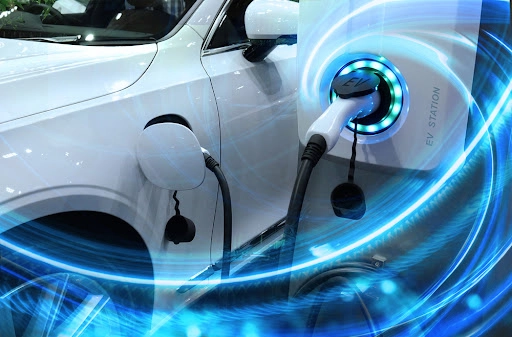Exploring Electric Vehicle Safety Standards: Types and Implications
2024.08.14

The automotive industry has recently shifted to electric vehicles (EVs). As concerns grow about climate change and the impact of motor fuel vehicles becoming apartments, there has been a worldwide shift towards greener, electric vehicles. With this change, ensuring electric vehicle safety protocols has become incredibly important.
Safety regulations of the EV industry closely monitor the safety and reliability of electric vehicles. This covers various aspects, from battery safety to crashworthiness and electromagnetic compatibility. By following the EV safety regulations, manufacturers ensure that their vehicles are safe, reliable, and long-lasting for consumers. In this article, we'll look at the importance of electric vehicle safety, focusing on integrating safety norms and measures into everyday electric vehicles.
Understanding Electric Vehicle Safety Standards
Electric vehicle safety requirements are essential for the functionality of electric vehicles in everyday life. Electric vehicle safety standards ensure the safety and reliability of EVs and create a comprehensive framework that covers everything from battery safety to electromagnetic compatibility. The primary purpose of these standards is to establish regulations that manufacturers must follow. This guarantees that all electric vehicles are safe and functional. Adherence to these standards ensures that EVs are built to minimize risk and hazards for vehicle owners, drivers, and other road users.
Examples of electric vehicle safety norms and guidelines include ISO 26262, which ensures international functional safety for developing electrical and electronic system road vehicles. This standard defines guidelines that will minimize the risk of accidents and ensure automotive components function correctly. Another example is the SAE J1772 standard which defines how the charge station connects with the vehicle, charges the car battery, and communicates with the system. Complying with these standards ensures that EVs meet the industry organization's minimum safety requirements.

Integration of Safety Standards in Production Processes
Integrating electric vehicle safety criteria into the manufacturing process of EVs is essential to ensure the overall safety of the vehicles. While this integration may cause additional costs and time constraints, prioritizing safety is important in the entire process. Without safety regulations, there would be significant risks to all drivers on the road. From design and engineering to manufacturing and assembly, safety considerations must be addressed at every step of the process.
There are many automotive companies currently implementing safety standards into their production processes. One example of this is Tesla, a renowned electric vehicle manufacturer known globally for its EVs. Tesla's electric vehicles consistently meet the safety guidelines set by bodies such as the National Highway Traffic Safety Administration (NHTSA) and the European New Car Assessment Programme (Euro NCAP).
Additionally, Tesla has also implemented its own safety standards and features, such as its proprietary Autopilot system and safety-focused elements, like crumple zones and reinforced battery packs. While prioritizing safety and integrating safety into production, Tesla has established trust with its customers and positioned itself as a leader in the electric vehicle industry.
Explore the intricate world of electrical wire harness design and its impact on electric vehicle safety. Discover how our expertise in 'Understanding Electrical Wire Harness Design and Production' aligns with the safety criteria of top EV manufacturers like Tesla.
Global Electric Vehicle Safety Standards
ISO 15118
ISO 15118 outlines communication protocols between electric vehicles and the charging station. This standard facilitates secure charging sessions, enabling features such as plug-and-charge, where vehicles and charging stations authenticate automatically, simplifying the charging process and enhancing user convenience.
ISO 26262
ISO 26262 addresses the functional safety of electrical and electronic systems within road vehicles. It provides a framework for identifying hazards, assessing risks, and implementing safety measures to minimize the risk of electrical failures contributing to accidents.
UNECE R100
The UNECE R100 regulation is a global standard focusing on the safety of electric vehicle batteries. It sets rigorous requirements for the design, construction, and performance of EV batteries to ensure they are safe during normal operation and in accidents, covering aspects like thermal runaway prevention and electrical isolation.
IEC 62196
IEC 62196 standardizes electric vehicle charging connectors and plugs across different countries, promoting interoperability and safety. It defines the physical and electrical characteristics of connectors, ensuring they meet safety requirements for AC and DC charging.
ISO 6469
ISO 6469 covers safety aspects specifically related to electric road vehicles, encompassing electrical safety, protection against failures, and the safety of occupants. It is divided into several parts, each focusing on different safety components, including electrical shock hazards and the integrity of battery systems.
U.S. Electric Vehicle Safety Standards
FMVSS 108
FMVSS 108 regulates the design and performance of automotive lighting, signaling, and reflective devices. For electric vehicles, this ensures that all lighting components, such as headlights, taillights, and turn signals, meet strict safety standards for visibility and operation.
FMVSS 208
FMVSS 208 specifies requirements for occupant crash protection in vehicles, including electric vehicles. It mandates the use of seat belts, and airbags, and provides guidelines on their arrangement and effectiveness to protect occupants in the event of a collision.
FMVSS 301
FMVSS 301 sets standards for fuel system integrity and fire risk reduction in crashes. For electric vehicles, this translates into requirements for battery protection and the management of electrical risks in severe collisions to prevent fires and explosions.
EPA Fuel Economy Standards
The Environmental Protection Agency (EPA) fuel economy standards aim to improve the fuel efficiency of vehicles, including electric vehicles. These standards encourage the development of energy-efficient vehicles to reduce greenhouse gas emissions and reliance on fossil fuels.
CARB Emission Standards
The California Air Resources Board (CARB) emission standards are among the most stringent in the U.S. They set limits on the amount of pollutants that vehicles can emit. For electric vehicles, which have zero tailpipe emissions, CARB focuses on manufacturing processes and the potential environmental impact of battery production.
NHTSA Fuel Efficiency Labeling Rule
The National Highway Traffic Safety Administration (NHTSA) requires fuel efficiency labeling on all new vehicles, including electric vehicles. This rule mandates clear, accessible information on the vehicle's fuel economy, allowing consumers to make informed decisions based on energy consumption and efficiency.
Significance of Electric Vehicle Safety Standards
There are many reasons why electric vehicle safety guidelines are important for professionals in the automobile industry; these include:
- Consumer Protection: The most important aspect of electric vehicle safety is the protection of consumers. Due to modern technology and innovation, EVs function differently from motor vehicles. With high-voltage batteries and unique drivetrain systems, they pose unique risks to consumers. Adhering to EV safety protocols minimizes these risks and protects drivers, passengers, and other road users.
- Industry Sustainability: The EV industry must win the trust of consumers and regulatory bodies to prosper in the automobile market. All safety issues could undermine public confidence and lead to regulatory interventions that could disrupt the industry. Upholding EV safety requirements can help secure the long-term sustainability of the industry.
- Enhancing Brand Reputation and Market Position: Adhering to EV safety norms is an excellent way to build brand reputation and place companies in a competitive position in the marketplace. Consumers are aware of the environmental impact of motor vehicles and are looking for trustworthy companies to move to. Companies can build consumer trust and grow brand reputations by exceeding minimum safety requirements and integrating advanced safety features.
- Regulatory Compliance: Adhering to eclectic vehicle safety standards is a best practice and a regulatory requirement. Regulatory bodies set these minimum safety standards that manufacturers must meet. This ensures the sale and operation of vehicles are up to standard. Failure to comply with these standards can result in severe penalties, including fines, recalls, and revocation of operating licenses. By prioritizing safety, manufacturers ensure their production can continue and will maintain their market presence. It also protects them from significant financial losses and debts due to large penalties.
- Supporting the Shift Toward Sustainable Mobility: Electric vehicles are central to the global shift towards sustainable, green energy transportation. Consumers seek to reduce carbon emissions and mitigate their impact on climate change. By adhering to safety standards, EV manufacturers can continue to support the mission to slow climate change and reduce the effects of carbon emissions. This supports the global transition to cleaner transportation and reduces the worldwide dependence on fossil fuels.
Moving Toward the Future
Electric vehicle safety norms and practices are essential as the electric vehicle industry continues to grow. Manufacturers must maintain safety and seamlessly integrate the standards set by regulatory bodies within their production processes. By maintaining these set safety standards, companies can protect consumers from potential risks associated with poor safety practices.
The automotive industry is shifting towards greener practices that reduce carbon emissions and minimize their environmental impact. EVs support this mission and aim to provide safe and reliable sustainable transportation for consumers. By exceeding safety standards, companies can prioritize consumer safety, grow brand reputations, protect consumers, and support the global shift towards sustainable practices. CTE works with companies and supports this mission by innovating and developing key automotive components for global customers.


